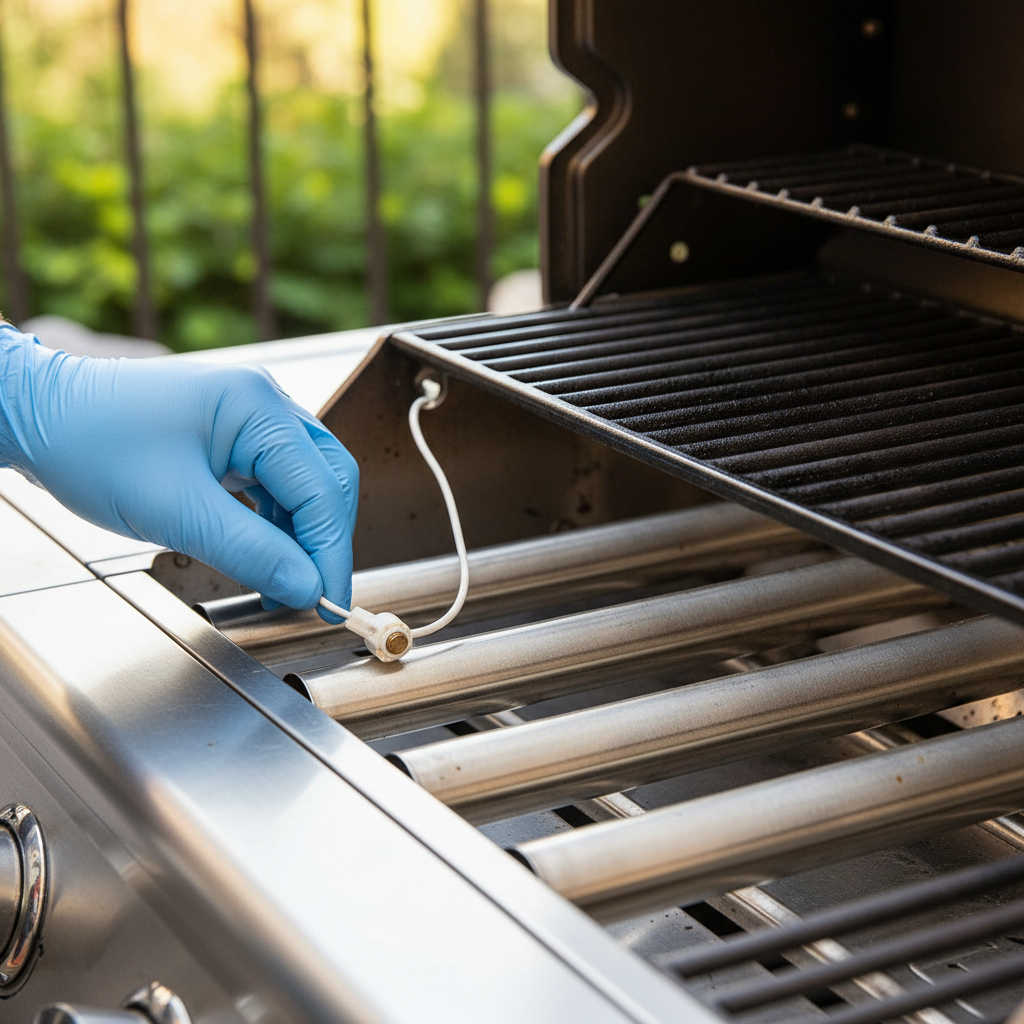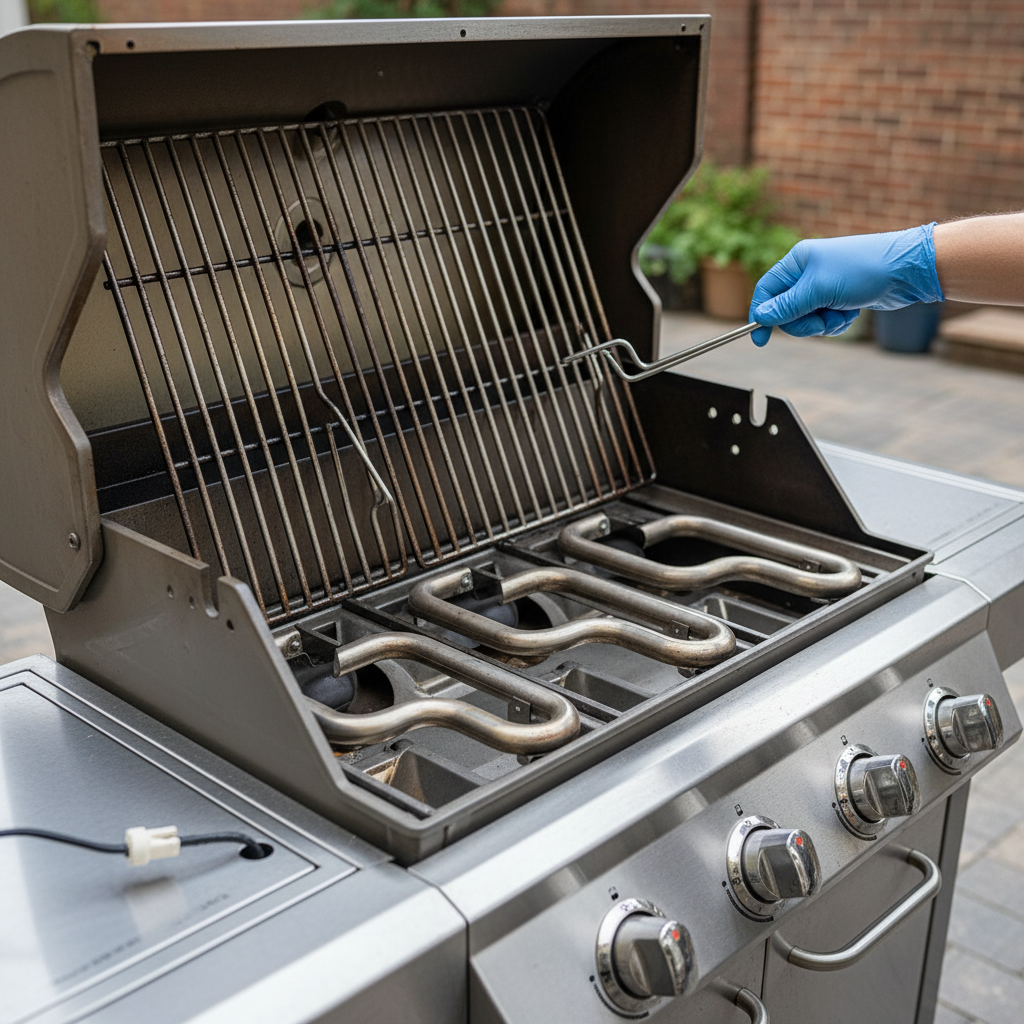
Simple Fixes for BBQ Lighters and Igniters That Won’t Spark
There’s nothing quite like the anticipation of firing up the grill for a backyard barbecue. But that excitement can quickly turn to frustration when your BBQ igniter isn’t sparking. A grill that won’t light is a common problem, but often, the solution is simpler than you might think. Before you reach for a lighter or matches (and we’ll always recommend a backup igniter tool for safety!), let’s walk through some easy troubleshooting steps to get your BBQ igniter sparking again.
Understanding Your BBQ Igniter System

Most modern gas grills use one of two main types of igniter systems to create that initial spark:
- Piezoelectric Igniters: These are common on many grills and work by striking a crystal to generate a small electrical charge when you press or turn a knob. This charge then creates a spark at the igniter electrode. They don’t require batteries.
- Electronic Igniters: Found on more advanced grills, these systems use a battery-powered module to send a continuous series of sparks to the electrodes when activated. They often provide a more reliable and consistent spark.
Regardless of the type, the basic principle is the same: a spark needs to jump a small gap near a burner port to ignite the gas. When your BBQ igniter is not sparking, it means something is interrupting this process.
Common Symptoms of a Failing Igniter
Knowing the signs can help diagnose the issue:
- No Click or Spark: You press the button or turn the knob, and nothing happens.
- Weak or Inconsistent Spark: You see a spark, but it’s too small or only happens sporadically.
- Sparking, But No Ignition: The igniter sparks, but the gas doesn’t light. This usually indicates a gas flow problem rather than an igniter issue.
Essential Safety First!
Before you begin any troubleshooting, always prioritize safety. Working with gas appliances requires caution:
- Turn off the gas supply: Close the valve on your propane tank or turn off the natural gas line.
- Disconnect the gas tank: If using propane, disconnect the tank from the grill.
- Allow the grill to cool: Never work on a hot grill.
- Wear protective gloves: Disposable Nitrile Gloves can protect your hands from grime and sharp edges.
- Work in a well-ventilated area: Ensure fresh air circulation.
Troubleshooting Step-by-Step: Simple Fixes
Check Your Power Source (Batteries, Push Button)
This is the most common and easiest fix, especially for electronic igniters.
- Replace Batteries: If your grill has an electronic igniter, locate the battery compartment (often near the igniter button or control panel) and replace the batteries. Even if they seem to have some life, a low battery can result in a weak or absent spark.
- Clean Battery Terminals: Corrosion on battery terminals can prevent a good connection. Use a small wire brush or a pencil eraser to gently clean any residue.
- Inspect the Push Button: For both types, ensure the igniter button isn’t stuck or damaged. It should depress and release smoothly.
Inspect the Igniter Electrode and Wire
The igniter electrode is the small, typically ceramic-insulated rod with a metal tip located near each burner. It’s where the spark actually occurs.
- Clean Carbon Buildup: Over time, grease and food debris can accumulate on the electrode, insulating it and preventing a spark. Gently clean the ceramic and metal tip with a soft brush (like an old toothbrush) or a small piece of fine-grit sandpaper. A versatile Grill Cleaning Spray/Degreaser can help loosen stubborn grime. Wipe clean with a microfiber towel.
- Check for Damage: Look for cracks in the ceramic, a bent electrode, or a frayed wire. A damaged electrode or wire will need to be replaced.
- Adjust the Gap: The electrode needs a small, consistent gap (usually about 1/8 to 1/4 inch, consult your grill’s manual) between its tip and the burner tube for the spark to jump. If it’s too close, too far, or touching the burner, it won’t spark effectively. Carefully bend the metal tip to achieve the correct gap.
- Ensure Secure Connections: Trace the igniter wire from the electrode back to the igniter module. Make sure all connections are tight and free of corrosion.
Clean the Burner Ports
Even if your igniter sparks, it won’t light the grill if gas can’t reach the spark. Clogged burner ports are a common culprit.
- Remove Grates and Flavorizer Bars: Access the burner tubes.
- Brush the Burners: Use a Safe Grill Brush (Bristle-Free) or a wire brush to clean the burner tubes, paying special attention to the small holes (ports) where the gas exits. A paperclip or thin wire can be used to clear individual clogged ports.
- Vacuum Debris: After brushing, use a shop vac to remove any loosened debris from inside the grill firebox.
Verify Gas Flow and Supply
Sometimes, the igniter isn’t the problem at all; it’s a lack of fuel.
- Check Propane Tank Level: Is your propane tank empty? A simple shake can often tell you if it’s low.
- Reset the Regulator: If you have a full propane tank but no gas flow, your grill’s regulator might be “tripped.”
- Turn off all burner control knobs and the gas tank valve.
- Disconnect the regulator from the propane tank.
- Wait 1-2 minutes.
- Reconnect the regulator to the tank, ensuring a tight seal.
- Slowly open the propane tank valve all the way.
- Wait 30 seconds, then slowly open one burner valve and try to ignite.
- Inspect the Hose: Look for kinks, cracks, or leaks in the gas hose. If you suspect a leak, apply a soapy water solution to the hose and connections; bubbles indicate a leak. Replace a damaged hose immediately.
Examine the Ground Wire
For electronic igniters, a ground wire is essential to complete the circuit. This wire typically connects the igniter module to the grill’s metal frame.
- Check Connection: Ensure the ground wire is securely fastened to both the module and the grill chassis.
- Clean Contact Points: Remove any rust or corrosion from the connection points using a wire brush or sandpaper to ensure good electrical contact.
Check for Rust or Corrosion
Rust and corrosion on any electrical component or metal surface can disrupt the flow of electricity, preventing a spark.
- Clean Affected Areas: Use a wire brush or steel wool to remove rust from around the igniter, burner connections, and ground wire contact points. For tougher spots, a paste made from Food-Grade Baking Soda and a little water, or a spray of Cleaning Vinegar, can help break down grime before scrubbing.
- Apply Protection: After cleaning, ensure components are dry.
When to Call a Professional or Consider Replacement
If you’ve tried all the simple fixes and your BBQ igniter is still not sparking, it might be time for a new part or professional help. If the igniter module itself is faulty, or if an electrode is physically broken beyond repair, replacement is usually straightforward for DIYers with the correct replacement part for their specific grill model. Consult your grill’s manual for part numbers and replacement instructions. If you’re uncomfortable working with gas lines or electrical components, it’s always best to contact a qualified technician.
Preventative Maintenance for a Reliable Spark
An ounce of prevention is worth a pound of cure, especially when it comes to grill maintenance.
Regular Cleaning Schedule
Keep your grill clean! Regular cleaning prevents grease and food buildup from interfering with igniters and burner ports. After each cook, use a grill brush. Periodically, perform a deeper clean, removing grates and flavorizer bars to clean burner tubes and igniter electrodes. Products like Easy-Off Professional Oven & Grill Cleaner can make deep cleaning much easier.
Proper Grill Storage
Protecting your grill from the elements is crucial. Moisture and dirt are major contributors to corrosion and wear. Always use a high-quality weather-resistant grill cover when your grill is not in use, especially if it’s stored outdoors.
FAQs
Q1: Can I use a lighter or matches if my igniter fails?
A: Yes, you can manually light your grill, but always exercise extreme caution. Open the grill lid, turn on the gas for the burner you wish to light, and immediately use a long lighter or match to ignite the burner. Stand back and never lean over the grill. If the burner doesn’t light within a few seconds, turn off the gas, wait a few minutes for any accumulated gas to dissipate, and try again. It’s always best to have a functional igniter.
Q2: How often should I replace the batteries in my electronic igniter?
A: It depends on how often you use your grill, but a good rule of thumb is to replace them once a year, typically at the start of grilling season, or as soon as you notice the spark becoming weak or inconsistent. Always keep a spare set on hand.
Q3: My igniter sparks, but only one burner lights. What’s wrong?
A: If you have multiple igniters or a crossover ignition system, and only some burners light, it typically points to issues with the individual unlit burner. Check for clogged burner ports on the non-lighting burners, ensure the gas tubes are aligned correctly, and verify that the igniter electrode for that specific burner is clean, properly gapped, and securely connected. A thorough cleaning of all burner tubes is often the solution.
Q4: My grill is brand new, and the igniter isn’t working. What should I do?
A: For a new grill, double-check all assembly instructions, especially those related to igniter wiring and battery installation. Ensure the gas tank is properly connected and the regulator is reset. Sometimes, factory connections can be loose. If problems persist, contact the grill manufacturer’s customer service or return to the retailer, as it may be a warranty issue.
BBQCleaner.com is a participant in the Amazon Services LLC Associates Program, an affiliate advertising program designed to provide a means for sites to earn advertising fees by advertising and linking to Amazon.com. We may earn a commission from purchases made through our links.
